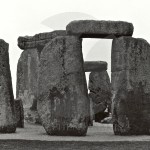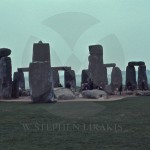The day that I always long for , I love the long days of summer. This day at once represents the warm summer light which we long for and the knowledge that every day after this begins to grow shorter. The myth of Persephone is a constant reminder of the long winter nights and the longing for the arrival of spring.
In the meantime I hope you can bask in the glorious sunlight.
in the Northern Hemisphere, summer solstice begins on Jun 21 2011 at 1:16 P.M. EDT
in the UK June 21, 2011 at 17:16 UTC
Sol + stice derives from a combination of Latin words meaning “sun” + “to stand still.” As the days lengthen, the sun rises higher and higher until it seems to stand still in the sky.
As a major celestial event, the Summer Solstice results in the longest day and the shortest night of the year. The Northern Hemisphere celebrates in June, but the people on the Southern half of the earth have their longest summer day in December.
Early Celebrations
Awed by the great power of the sun, civilizations have for centuries celebrated the first day of summer otherwise known as the Summer Solstice, Midsummer (see Shakespeare), St. John’s Day, or the Wiccan Litha.
The Celts & Slavs celebrated the first day of summer with dancing & bonfires to help increase the sun’s energy. The Chinese marked the day by honoring Li, the Chinese Goddess of Light.
Stonehenge Summer Solstice 2010
Perhaps the most enduring modern ties with Summer Solstice were the Druids’ celebration of the day as the “wedding of Heaven and Earth”, resulting in the present day belief of a “lucky” wedding in June.
Today, the day is still celebrated around the world – most notably in England at Stonehenge and Avebury, where thousands gather to welcome the sunrise on the Summer Solstice.
Pagan spirit gatherings or festivals are also common in June, when groups assemble to light a sacred fire, and stay up all night to welcome the dawn.
Summer Solstice Fun Facts
Pagans called the Midsummer moon the “Honey Moon” for the mead made from fermented honey that was part of wedding ceremonies performed at the Summer Solstice.
Ancient Pagans celebrated Midsummer with bonfires, when couples would leap through the flames, believing their crops would grow as high as the couples were able to jump.
Midsummer was thought to be a time of magic, when evil spirits were said to appear. To thwart them, Pagans often wore protective garlands of herbs and flowers. One of the most powerful of them was a plant called ‘chase-devil’, which is known today as St. John’s Wort and still used by modern herbalists as a mood stabilizer.
More about summer solstice around the Web:
On the Web, discover more about the topic, where & how Summer Solstice is celebrated around the world along with related history, folklore and rituals that mark the much-awaited long, bright days of summer ….
Summer Solstice – Good overview of its history, customs & holidays, illustrations, date & time charts and related links, from Wikipedia.
Summer Solstice Celebrations – Ancient & Modern – Skip past the intrusive ads for a detailed discussion about how the day has been celebrated over the centuries, and in many cultures, with suggested reading and related links.
BBC Religion – Summer Solstice – A brief overview of Pagan rituals and ceremonies with related links to more facts & information.
Weird Wilstshire – Summer Solstice – Archived pictures with a report on one particularly successful UK sunrise celebration, including related links & online forum.
The Pagan Festival of Litha – The origins of Druidic Summer Solstice celebrations and their meaning in the natural cycle of seasons.



Very cool – as always! Bill